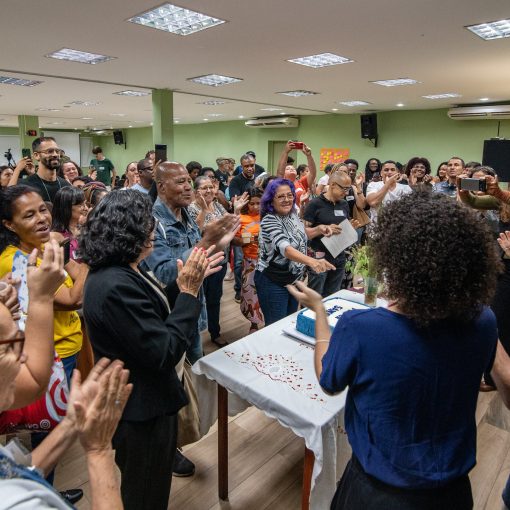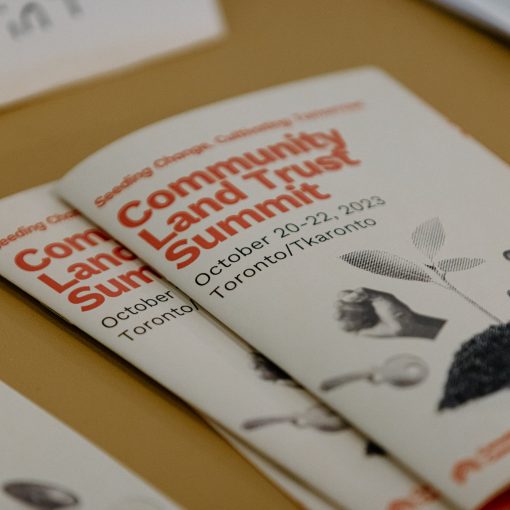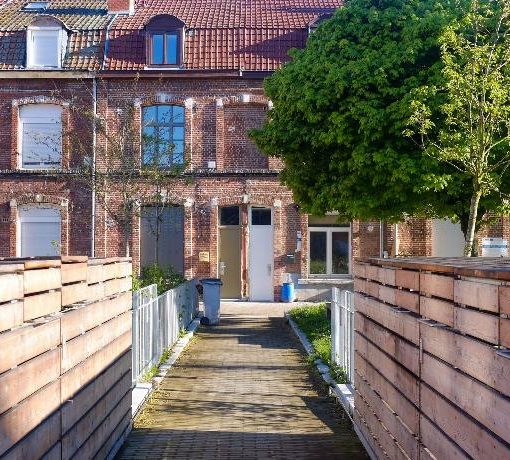The following contribution was written by Center for CLT Innovation Board Member Razia Khanom, Vice President of the London CLT:
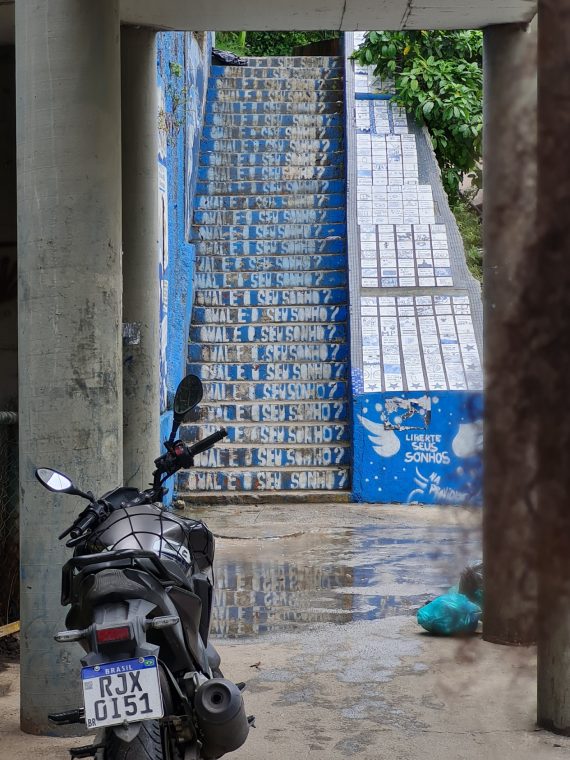
In January 2022, I was invited to speak with the communities/working groups from Rio de Janeiro in their work toward making CLT’s a reality. I discovered that whilst we had a commonality in the need and desire to build affordable homes, the scope of challenges faced in Rio was not anything I was familiar with. At the end of the event, the words of one particular individual’s comments were imprinted on me: “never lose what you have built”. It was an incredibly invigorating experience. Though worlds and languages apart, there was a sense of familiarity I was unable to put my finger on. I was very grateful for the experience and knowledge community leaders imparted.
Fast forward to Spring/Summer 2023, my good fortune brought an invitation from Rio de Janeiro to celebrate five years of the CLT movement. A once in a lifetime experience for me: my family had to come. They don’t often get a front seat in this journey I have been on over the last five years.
The Brazilian hospitality, though nothing special to the locals, coming from the City of London, was a breath of fresh air.
Our travels through Rio were an interesting experience. The sense of curiosity quite often followed by enquiries of where we were from. The UK did not make sense, but Bangladesh seemed to place all the pieces correctly, and the key question “are you enjoying your time here” often concluded. It’s amazing how much conversation can be had even with a language barrier. The human language always supersedes.
Upon seeing a jackfruit tree came the realisation that perhaps there was an explanation to the sense of familiarity. Taking me back to my childhood when my parents gathered us around, clinging onto the memories of their homeland and the heritage they passed to us. The forgotten history of Portuguese influence in the Indian Ocean quickly came to the surface. You don’t often get to teach your capable tour guide that this was the national fruit of your motherland. So far yet connected.

Living in a central London borough similarities of the wealth divide became a mirrored vision along with the visible social needs, but much like the Lapa Steps, we still invest our time, effort, and money into building our homes which are treasures to us.

Providência – “Peace, Justice, Liberty”

Friday 27 October 2023: Today my mind was forced to do a 180° turn. I was challenged on everything I thought I knew of favelas and the communities living in them.

We arrived here to meet our Pastor and resident tour guide Cosme Fellippsen. Construction in full swing to build the modern beside dilapidated but protected façades. The eerie feeling in the air laid heavy. I was to find out from our tour guide that this was Valongo Wharf — where millions of people taken by force not only lost their families, but they were also stripped of their identities too. I reflected on how my own children’s surname was a tell-tale sign of the common heritage they shared with descendants of those who were forced on this wharf.
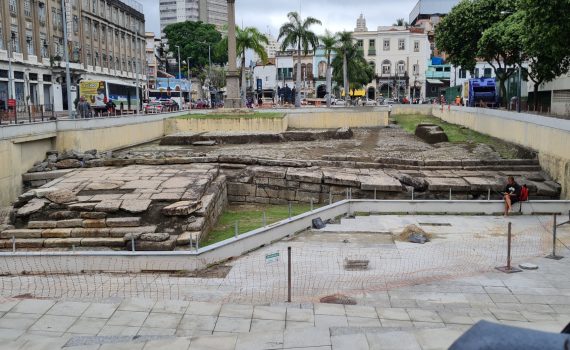
As we made our ascent up the steep hill towards Providência Favela, we were surrounded by the expression of art which spoke a million words of dedication, struggle, and hope. Far from the harrowing images known to me no thanks to the Hollywood depiction known as City of God, I was taken aback by the unique character and variety of solid structures which presented themselves among homes which tell stories of conflict. A far cry from the corrugated tin roofs, flimsy wooden structures, and tarpaulin I was ignorantly expecting.


Cosme took the opportunity to ask what the Muslim community’s thoughts were on the current situation unfolding in Gaza. Whilst weighing heavily but silently in my heart, I was apprehensive about sharing my deeper thoughts without the accusation of antisemitism being brandished as we have become accustomed to when speaking on the right to self-determination. An incredible conversation ensued which whilst pro-longing our tour highlighted the challenges that the favela communities face. How much of the repression was identical to those in the occupied territories. We learnt of Cosme losing his brother to police brutality and the “assassination” of his young nephew at the hands of a sniper employed by law enforcers almost identical to the images we have become accustomed to coming out of Gaza and the West Bank. It sunk my heart to hear of the parallel lives they were living. As we walked higher and deeper into the Favela, we saw further evidence of this by way of partly demolished building, homes damaged with bullet holes and a great loss of the largest community space taken up by an abandoned cable car station.

Key questions around how those with disabilities were catered for, medical emergencies, education, health care facilities and rubbish disposal arose in and amongst the ingenuity of the community to build solid and re-enforced structures and young happy faces in the skateboard park. The pathways are so narrow that bringing the construction materials used seemed impossible. It is here the true spirit of community and how to preserve it comes to life. Something I have not seen demonstrated anywhere else. The building style and plans ensure that communities and families stay together and given the opportunity continue to thrive and grow together.

One can easily appreciate the safety and security the endless maze offers to those on the outside, however, the stories the homes speak to the resilience of the community to overcome the injustices they have been subjected to for decades makes the name Providência incredibly apt. When we consider the effect of over-policing and racial disparity, we see parallel challenges for both race and class whether it is in London UK, US, or the Global South. It is incumbent for everyone else to make space for the self-autonomy of these amazing communities as they have more to offer to the wider stability of communities.
Celebrating Five Years of Favela CLTs

We learned of the work in progress by Houston CLT and incredible projects delivered by Fideicomiso de la Tierra del Caño Martín Peña in Puerto Rico and learning about the legislation that already exists in Brazil, I quickly realised that the CLT model was much better suited for Rio de Janeiro.
Meeting members from each of the communities offered an intimate understanding of the unique challenges each group experiences. Appeals of the older generation to ensure they are considered as part of community plans for the future were difficult listening. The impact of over-policed communities was evident in the lack of working-age people to care for the elder generations shoulders upon which we stand. Communities struggling to be heard by politicians was an experience I could personally relate to given the challenges we face in my own community steering group having had an eight-year campaign come to a grinding halt after our local politicians rescinded on their support. Plans on how to support each group on a community level in a stewardship fashion will only go so far. It is vital for the development of Rio de Janeiro and other major cities globally that greater municipality/government involvement is improved exponentially if we are to stand to make good ground on this global housing crisis.
Learn more about the event here
Residencial Esperança
Nearing the end of my visit to Rio de Janeiro I was not prepared for what awaited me here. We were introduced to the community which was “self- built”. The project was designed in great detail by the community with a clear vision of what they wanted for their community to settle and thrive.

The cost of the units seemed to total what you might be able to purchase windows in the UK. Upon asking if “professional help” was brought in, they simply shook their heads. An expectation that a small group of experts spent a great deal of time building in their spare time left me feeling somewhat confused.

This was a project which was truly community-led and developed in every sense. Approximately 80 distinguished two double-bedroom bungalows were all built by the residents living in them. A whole 200-strong community! They need not have brought in the professionals for they were the professionals. Craft handed down generation after generation who have lived in unison with mother nature were more than knowledgeable on how to build and make a successful neighbourhood. Meeting all the key members of the community who were involved from campaigning, designing, balancing books, purchasing of locally sourced materials to building all were present. The care for their homes now eight years old was evident and stamped with the unique personalities of the residents.
The pride they took to invite and show us around was nothing short of an honour. The relentless campaigning and aspirations to build on their current success to facilitate others housing needs was infectious. How much we all have in common is astounding. Little did I realise that I would be the one to gain more than to inspire the marvellous communities of Rio de Janeiro that adopt the CLT model which seem so clearly suited for them. They have clearly demonstrated how this community was the expert in understanding and delivering what their community needs. It was a comforting realisation that the CLT model proves that though the core values remain the same it is also flexible to meet the needs of a collective wherever they are in the world. My greatest thanks to Theresa Williamson, my latest sister. I came to Rio de Janeiro and left my heart there but was gifted in its place hope.
The views and opinions expressed in this article are those of the author and do not necessarily reflect the views or positions of the Center for CLT Innovation.

